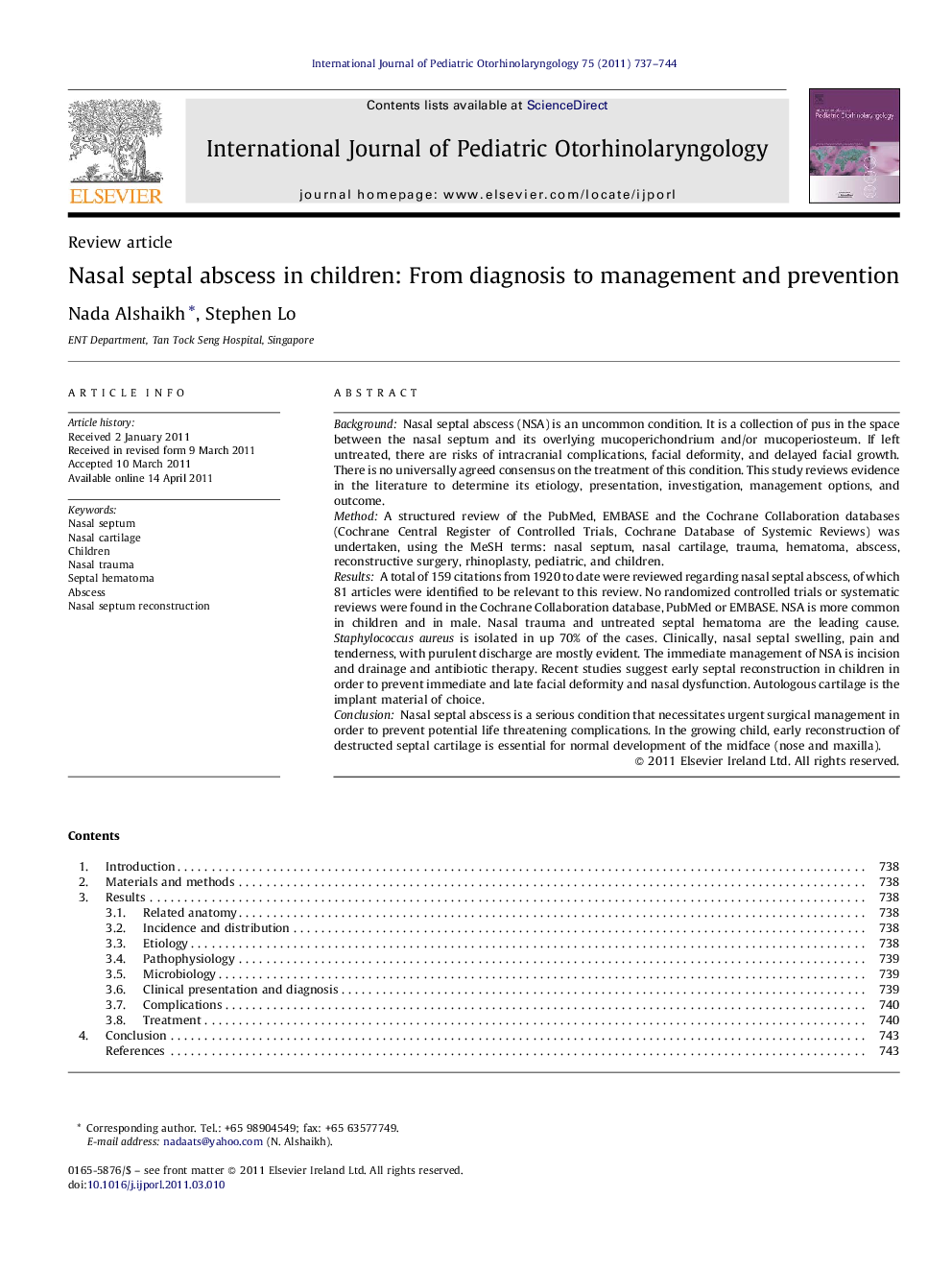| Article ID | Journal | Published Year | Pages | File Type |
|---|---|---|---|---|
| 4113462 | International Journal of Pediatric Otorhinolaryngology | 2011 | 8 Pages |
BackgroundNasal septal abscess (NSA) is an uncommon condition. It is a collection of pus in the space between the nasal septum and its overlying mucoperichondrium and/or mucoperiosteum. If left untreated, there are risks of intracranial complications, facial deformity, and delayed facial growth. There is no universally agreed consensus on the treatment of this condition. This study reviews evidence in the literature to determine its etiology, presentation, investigation, management options, and outcome.MethodA structured review of the PubMed, EMBASE and the Cochrane Collaboration databases (Cochrane Central Register of Controlled Trials, Cochrane Database of Systemic Reviews) was undertaken, using the MeSH terms: nasal septum, nasal cartilage, trauma, hematoma, abscess, reconstructive surgery, rhinoplasty, pediatric, and children.ResultsA total of 159 citations from 1920 to date were reviewed regarding nasal septal abscess, of which 81 articles were identified to be relevant to this review. No randomized controlled trials or systematic reviews were found in the Cochrane Collaboration database, PubMed or EMBASE. NSA is more common in children and in male. Nasal trauma and untreated septal hematoma are the leading cause. Staphylococcus aureus is isolated in up 70% of the cases. Clinically, nasal septal swelling, pain and tenderness, with purulent discharge are mostly evident. The immediate management of NSA is incision and drainage and antibiotic therapy. Recent studies suggest early septal reconstruction in children in order to prevent immediate and late facial deformity and nasal dysfunction. Autologous cartilage is the implant material of choice.ConclusionNasal septal abscess is a serious condition that necessitates urgent surgical management in order to prevent potential life threatening complications. In the growing child, early reconstruction of destructed septal cartilage is essential for normal development of the midface (nose and maxilla).
